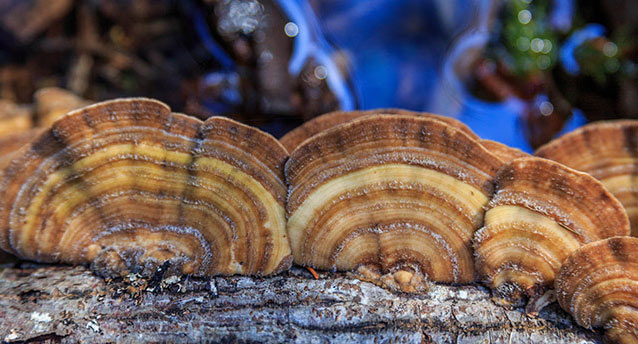Change happens. Seasons turn. Children grow. Technologies make life easier (or maybe more complicated). Friendships mature.

NPS/Kristi Rugg
Change is happening in our national parks, too. Some of these are good and easy to see, like improvements to trails, new exhibits, and restored streams and wetlands. But many of the changes are ones that can be tough to see or we would rather do without-- the loss of native species, gains of invasive plants and insects, air and water pollution, warming temperatures, and shifts in the timing and amount of rainfall. These changes make managing national parks and preserving natural and cultural treasures difficult. It is tough to plan for the future when you don’t know just what it holds.
We Need Information
In 1998 the National Park Service began monitoring national parks’ “vital signs”--things like climate, water quality and quantity, and forest and wetland health--to help us diagnose and understand the overall health park ecosystems. But by itself, monitoring is not enough.
We turn to scientists at universities, nonprofits, and other government agencies to research and work to understand the nature and consequences of changes in the environment. We also turn to our archives and historical records to understand past conditions. In 2002, the National Park Service created a network of research learning centers to help facilitate this research and to connect it with management and education. The biggest of these centers is here in Acadia, and is managed jointly by the park and Schoodic Institute, a nonprofit partner.
This monitoring and research gives us great information and insights, but it is still not enough for us to adequately protect our natural and cultural resources.
So we turn to people like you! We work with volunteers to do citizen science, monitoring and studying things that would be tough or impossible for us to do otherwise.
In Acadia, we involve citizen science volunteers in our vital signs monitoring and research with university scientists. Volunteers monitor biodiversity and how it is changing. Together we inventory plants, insects, birds, and other wildlife, and monitor changes in their abundance, behavior, and phenology (i.e., when they do things like migrate, breed, and go dormant for the winter). Citizen scientists participate in programs like eBird, Hawk Count, iNaturalist, and Nature’s Notebook. Sometimes, our volunteers help us with more nuanced questions, like: How is mercury getting from the air and water into our wildlife; or how is ocean acidification affecting snail-crab interactions in the intertidal zone? They also help us analyze thousands of historical documents and records.
So Now What
We get tremendous amounts of information about the changes taking place; more data than we have ever had before. But the information is dispersed into many databases and formats, which makes research slow. Researchers spend most of their time “wrangling” data--finding, cleaning, formatting--before they can answer questions we need answered.
We are working with a new suite of partners to solve this problem; Schoodic Institute, Earthwatch Institute, and EMC. Together we collect and organize data, to ease the burden on researchers, and answer the question: How is our environment changing?
Take Action
Our mission motivates us to collect and distribute this information and use it to take action--to protect natural and cultural resources in our lands and to provide for the enjoyment, education, and inspiration of this and future generations. In this vein, with the help of Friends of Acadia and other partners, like the New England Wild Flower Society, we are beginning two substantial resource management projects. The first is in the Cromwell Brook watershed, at Sieur de Monts, where the park was established in 1916. The second is on the summit of Cadillac Mountain, one of the most-visited sites in Acadia.
Our actions are guided by science. The steps we take to improve water quality, the species we replant, and how we mesh natural and cultural landscapes will be informed by our ever-developing understanding of current and expected environmental changes, and the integrity and resiliency of complex natural systems. Research will also inform new exhibits, interpretive programs, and outreach done by park staff and our partners.
This outreach is critical because most of the pressures changing our parks’ resources come from well beyond park boundaries. We need the help of partners (and you) to turn this information into actions that reduce air and water pollution, slow the spread of invasive species, minimize carbon emissions, and improve the connectivity of natural habitats so species can move and respond to their changing environment.
We Need You
Despite all of our work, and the contributions of thousands of volunteers, there are still gaps we need to fill--seasons and species for which we still lack data, historical records that could provide insights but are hidden in basements or attics, and help putting this information to use protecting our park and the surrounding communities and ecosystems.
Here’s how you can help:
-
Participate in citizen science to help us gather the information we need in Acadia or wherever you live.
-
Join an Earthwatch expedition to Acadia or another one of their many citizen science destinations.
-
Participate in eBird, iNaturalist, or Nature’s Notebook in a park or your backyard.
-
Help us track migrating hawks by participating in Hawk Count. Every fall we host a count on Cadillac Mountain.
-
Help us digitize and transcribe some of our historical documents, specimens, and other records--we have over one million! Or tell us about a record you have that documents past observations of natural and cultural resources.
Contact Schoodic Institute for other opportunities to participate in citizen science or to help with historical records in Acadia.
Help us turn science into restoration, rehabilitation, and maintenance! Volunteer with Friends of Acadia improving trails and carriage roads, removing invasive plants, or maintaining the Wild Gardens of Acadia.
Want to volunteer in another park? Go to findyourpark.com to find citizen science and other volunteer opportunities in parks around the country.
Last updated: July 13, 2015
